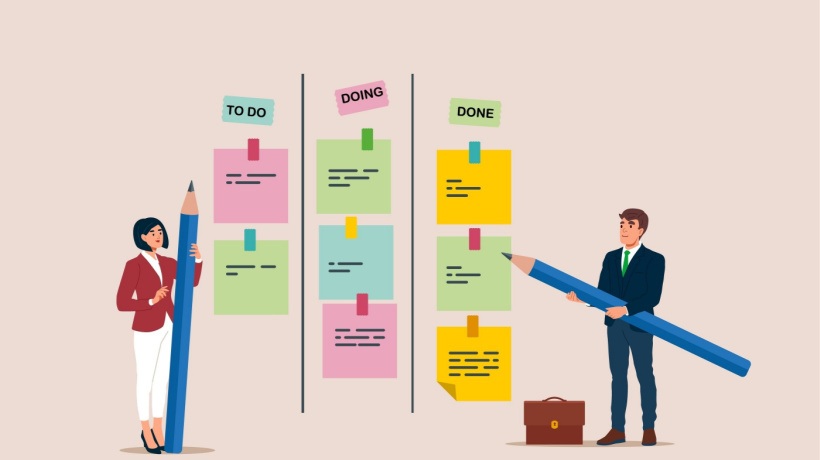Creating Foundations Of Excellence With "Built To Last" Principles
In the field of Instructional Design, professionals are akin to architects, meticulously crafting educational experiences that not only inform but transform. The principles encapsulated in Jim Collins and Jerry I. Porras’ masterpiece, "Built to Last," offer a treasure trove of insights. While originally intended to unveil the secrets behind enduring companies, these principles, when viewed through the lens of an Instructional Designer, morph into foundational pillars that can elevate learning experiences to unprecedented heights.
An Instructional Designer's Guide To The "Built To Last" Principles
1. Clock Building, Not Time Telling
In the corporate world, Collins and Porras emphasized the essence of creating entities that outlive individual founders. Translating this to the realm of Instructional Design underscores the imperative of crafting learning ecosystems that are self-sustaining. The focus metamorphoses from delivering isolated, ephemeral learning modules to establishing robust, adaptive learning environments that foster continuous Learning and Development.
Instructional Designers, akin to clock builders, are tasked with the monumental responsibility of creating educational architectures that are not confined by the limitations of time or the transient participation of individual educators or learners. Every learning module, interactive session, and educational resource is a cog in the intricate machinery of perpetual learning. The synergy of these elements cultivates an environment where learning is not an isolated event but a continuous journey, seamlessly integrating into the fabric of the learners’ personal and professional existence.
2. Genius Of The AND
The duality principle is a cornerstone in "Built to Last." It accentuates the capacity to embrace and integrate seemingly contradictory elements, fostering a holistic entity that is enriched by the diversity of its components. In Instructional Design, this principle manifests as the harmonious amalgamation of pedagogical efficacy and technological innovation, theory and practice, customization and scalability.
Instructional Designers are the custodians of this delicate balance. They weave together the richness of content with the allure of technology, ensuring that the sanctity of educational integrity is preserved while the enchantment of innovation is seamlessly integrated. Every learning experience is a dance of dualities, where the richness of content and the allure of technology waltz in perfect harmony, creating a symphony of learning that is as profound as it is enchanting.
3. Core Ideology
Every enduring entity is anchored in a core ideology—a set of beliefs and values that define its essence. In the world of Instructional Design, this core ideology is the sanctified covenant that ensures that every educational intervention is imbued with ethical considerations, quality, and learner-centricity.
Instructional Designers, as the guardians of this core ideology, ensure that every piece of content, every interactive session, and every assessment is a reflection of the unwavering commitment to upholding the highest standards of educational integrity. It is this core ideology that ensures that amidst the dazzling allure of technology and innovation, the soul of education—its unwavering commitment to enlightening, empowering, and transforming learners—remains inviolate.
4. Preserve The Core/Stimulate Progress
This principle is a testament to the dynamic equilibrium that characterizes entities that are built to last. It is the delicate dance between preserving the foundational elements that define the entity’s essence and stimulating progress to ensure relevance, adaptability, and evolution.
In Instructional Design, this principle manifests as a commitment to upholding core pedagogical principles while being receptive to the winds of change. Instructional Designers are the alchemists who master this delicate balance, ensuring that learning experiences are rooted in foundational educational principles while being adorned with the jewels of innovation, ensuring that they are as timeless as they are contemporary.
5. Big Hairy Audacious Goals (BHAGs)
BHAGs are not just goals; they are declarations of audacious ambition that propel entities to transcend boundaries and venture into uncharted territories. In the world of Instructional Design, BHAGs are the north stars that inspire designers to envision educational experiences that are not confined by the limitations of the present but are illuminations of the possibilities of the future.
Every innovative learning module, every interactive educational game, and every immersive learning experience is a testament to the audacious ambition of Instructional Designers who dare to dream, dare to innovate, and dare to transform the educational landscape, one learning experience at a time.
6. Cult-Like Cultures
In "Built to Last," enduring companies often foster cult-like cultures, characterized by unwavering commitment and passionate adherence to the core ideology. In Instructional Design, this translates into creating vibrant learning communities where learners and educators are not just participants but passionate advocates and contributors.
Instructional Designers are the architects of these vibrant learning ecosystems. They craft learning experiences that are not just transactions of knowledge but are transformative journeys that elevate learners from passive recipients to active contributors, fostering a dynamic, interactive, and passionate learning community that is characterized by mutual growth, collaborative learning, and collective evolution.
7. Try A Lot Of Stuff And Keep What Works
The spirit of experimentation is the lifeblood of innovation. In the context of Instructional Design, this principle underscores the imperative of adopting a flexible, adaptive, and experimental approach. Instructional Designers, armed with the arsenal of diverse instructional strategies, technologies, and methodologies, are akin to artists, painting the canvas of education with strokes of innovation, assessing the impact, and refining their masterpieces in a continuous iterative process.
Every learning module is a testament to this spirit of experimentation—a blend of tried and tested strategies adorned with strokes of innovative brilliance, assessed, refined, and perfected to create learning experiences that are not just effective but are masterpieces of educational artistry.
8. Home-Grown Management
The principle of nurturing leadership from within is pivotal in building entities that endure. In Instructional Design, this underscores the importance of investing in the continuous professional development of Instructional Designers. Organizations committed to creating impactful learning experiences are characterized by their unwavering commitment to nurturing their talent, ensuring that their Instructional Design teams are not just competent but are masters of their craft, continuously evolving, learning, and growing.
Every educational intervention crafted by these adept professionals is imbued with the richness of their expertise, the depth of their experience, and the brilliance of their innovation, ensuring that learning experiences are not just informative but are transformative odysseys that enlighten, empower, and elevate learners.
9. Good Enough Never Is
In a world characterized by the relentless pursuit of excellence, "good enough" is the antithesis of entities built to last. In the realm of Instructional Design, this principle is the unwavering commitment to transcending the ordinary, exceeding expectations and setting new benchmarks in educational quality and impact.
Instructional Designers, as the custodians of this commitment to excellence, ensure that every learning experience is a journey into the extraordinary—a symphony of content, pedagogy, and technology that is meticulously crafted, assiduously refined, and exquisitely delivered, ensuring that learners are not just educated but are profoundly transformed.
Conclusion
In the intricate dance of principles and practices, the insights encapsulated in "Built to Last" offer Instructional Designers a compass to navigate the complex terrains of educational innovation. Each principle, when adapted with ingenuity, becomes a pillar that supports the edifice of transformative learning experiences. In the hands of adept Instructional Designers, these principles are not just theoretical constructs but are the foundational stones upon which enduring, impactful, and transformative learning experiences are meticulously crafted, ensuring that in the world of education, we are not just building for the present but are architecting legacies of learning that are truly built to last.
Author's note:
This article is a conceptual adaptation and not a direct application of the principles. Always refer to the original text for an in-depth understanding of Collins and Porras’ principles.
References
- Collins, J., Porras, J. I. 1994. Built to Last: Successful Habits of Visionary Companies. New York: HarperBusiness.









